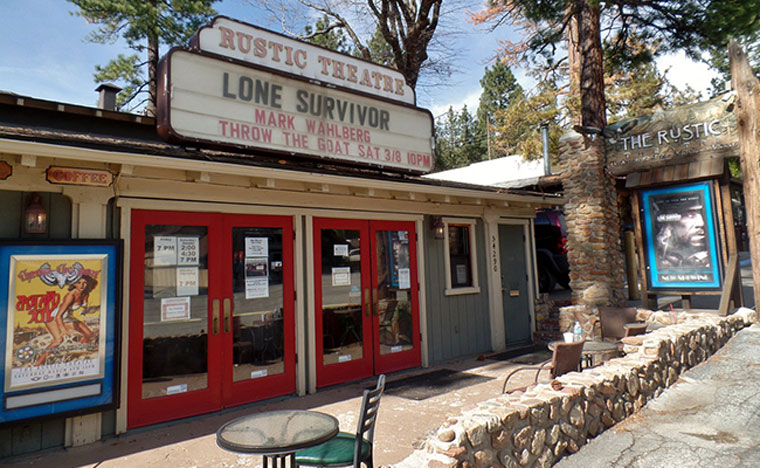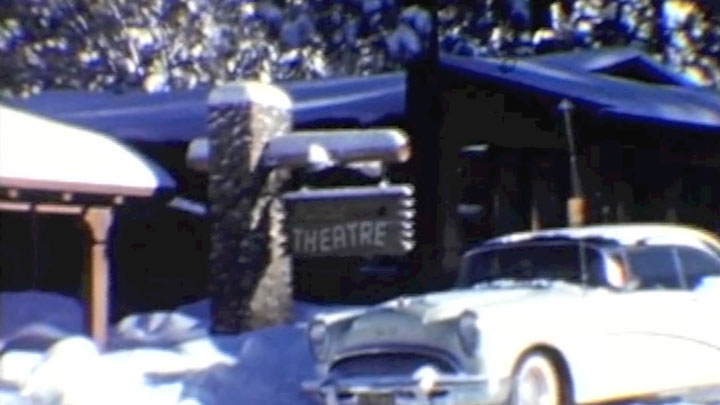
Courtesy James Markham
Idyllwild’s Rustic Theatre has a long history, but might have ceased to exist were it not for a critical development in 2012. On Monday, April 16, owner Shane Stewart shuttered the theater for four days to complete a conversion from 35-millimeter film to state-of-the-art digital projection. Stewart had previously installed Dolby Digital Surround Sound. Had Stewart not made the substantial investment to fund the conversion, the Rustic, as a first-run movie house, would have ceased to exist.
Stewart said he made the investment to guarantee a first-run movie house would remain on the Hill and to enhance and perpetuate the Idyllwild International Festival of Cinema as a quality venue for independent filmmakers. Said Stewart just before the Rustic reopened as a digital house, “We’ll be providing the same quality screening experience as Sundance, Toronto and Telluride.” He also noted that it was fortunate the Rustic, given its age, had grandfathered distribution licenses with major studios that go back for decades. He said it would have cost more than $1 million to construct a new movie house on the Hill with the kind of equipment and screening ability studios are now requiring, as well as acquiring new distribution licenses for first-run films. “If this theater had disappeared, we would never have been able to get back major film distribution rights or have a new first-run theater,” he said.
In 2012, John Fithian, CEO of the National Association of Theatre Owners, estimated 1,000 small theatres, representing 10,000 screens and 20 percent of all U.S. movie theaters, would have been forced to close because they lacked the money needed to convert to digital projection. Those costs range from $60,000 to $90,000 per screen. “Convert or die,” said Fithian at the time, summing up the situation facing small movie theater operators.
As for the Rustic’s history, it began in 1944 at what is now Silver Pines Lodge on Cedar Street. Built in 1923 as a place to construct and store rustic furniture (according to the Silver Pines website), the building became the Rustic Tavern in 1933 at the end of Prohibition. In 1944, the property was bought by Paul Foster, and Bill and Prudence Underhill started the Rustic Theatre movie house, with 145-seat capacity.

Screengrab from
Froehlich’s home video
In 1952, Glenn Froehlich began constructing the present Rustic Theatre building that opened June 10, 1952, screening “Red Mountain,” a “Technicolor Horse Opera” starring Alan Ladd. Welcoming patrons with its sloping floor, wide aisles and seats so comfortable “patrons would have difficulty lifting popcorn to their mouths,” the Rustic began its long run as a first-run movie house. Ownership passed through a number of Idyllwild proprietors over the years as the world below modernized and movie-goers began attending multi-screen mega houses, often connected to large shopping malls or plazas.
Still, on the Hill, the Rustic remained rustic, maintaining its small-town charm and ambience and since 2012, surprising patrons with the highest level of quality movie projection and sound.










